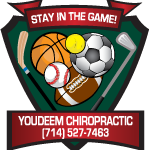Chiropractic
Try Conservative Care Before Surgery for Lumbar Spinal Stenosis
Lumbar spinal stenosis (LSS) is a debilitating condition associated with the degeneration of the spine, which can have a wide range of symptoms including back pain, leg pain, numbness and tingling in the legs and impaired physical function. A recent study found that for patients with mild-to-moderate LSS, conservative treatment that includes manual therapies, supervised…
Read MoreMultimodal Approach Best for Chronic Low Back Pain
Among a group of 69 adults with chronic low back pain, those who received a multimodal treatment plan that included manual therapies, specific exercises, and patient education—an approach often used by doctors of chiropractic—experienced greater improvements in pain and disability than participants provided with only patient education or patient education combined with manual therapy. Physiotherapy…
Read MoreLow Back Pain in Working Adults
Questionnaires completed by working-age adults not currently under care for low back pain revealed that 46.5% currently had some degree of low back pain and 72.3% presently experienced some level of low back-related disability. The findings reveal that many non-careseeking workers have low back pain and/or disability, which suggests that some level of pain and…
Read MoreNeck Disorder May Worsen Jaw Pain and Function
Examinations of temporomandibular (TMD) patients revealed that those with restricted cervical range of motion experienced more severe TMDrelated pain and disability than TMD patients with normal cervical range of motion. The findings suggest that dysfunction in the cervical spine may play a role in TMD and treatment to restore normal motion in the neck—such as…
Read MoreImproved Posture
A literature review found that manual therapy techniques—such as those used by doctors of chiropractic—are an effective intervention for improving lateral pelvic tilt and reducing forward head posture and thoracic kyphosis. Gait & Posture, June 2022
Read MoreEffective Treatment for Cervicogenic Dizziness
A systematic review that included 13 studies found that the combination of manual therapies and specific exercises is an effective approach for managing dizziness that originates from dysfunction in the cervical spine. Doctors of chiropractic often use manual therapies like spinal manipulation and mobilization in combination with exercises in the management of musculoskeletal disorders of…
Read MoreManual Therapies Plus Stabilization Exercises for Chronic Neck Pain
Among a group of 58 patients with chronic neck pain and mobility deficits in the upper cervical spine, researchers found that the combination of spinal manipulative therapy, mobilization therapy, and stabilization exercises targeting the upper cervical spine led to improvements in pain and range of motion that were not observed in participants in a stabilization…
Read MoreRecommendations for Acute Cervical Radiculopathy.
An expert panel concluded that because the risk-benefit ratio for surgery is less favorable for cervical radiculopathy, conservative treatment options (like chiropractic care) should be the initial treatment approach for the condition. The panel recommends patient education, spinal manipulative therapy, and foraminal opening exercises in the acute stage; individualized physical activity including supervised motor control,…
Read MoreMobilization and Exercise for Shoulder Pain
Among a group of 23 patients with shoulder pain lasting longer than six weeks, those treated with a combination of glenohumeral mobilization with movement and shoulder exercises—an approach often used by doctors of chiropractic—experienced meaningful improvements in shoulder pain, disability, and range of motion within one month. Journal of Manual and Manipulative Therapeutics, February 2022
Read MoreProlonged Sitting at Work Affects the Spine
Assessments of office workers revealed that at the end of an eight-hour workday, participants had experienced a significant reduction in both standing and sitting height, along with an increase in spinal pain. The findings highlight the importance of breaking up prolonged sitting time with frequent breaks to stretch or walk. International Journal of Occupational Safety…
Read More
